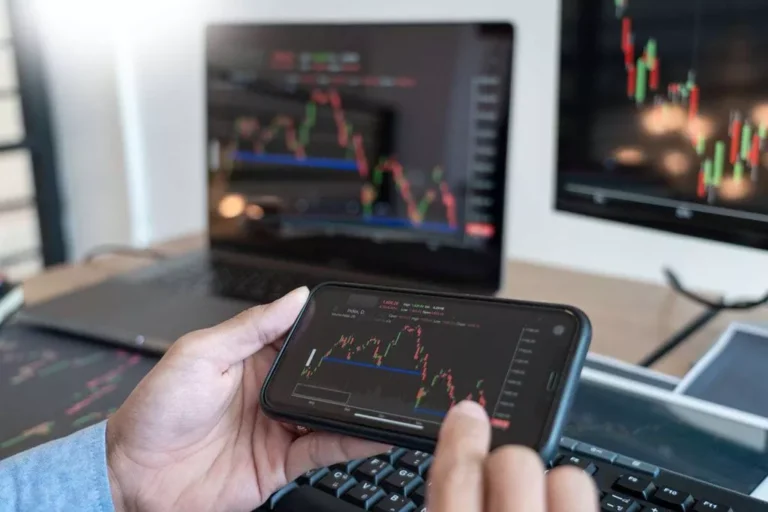Content
ECN traders have direct access to the interbank market, where larger liquidity providers operate. The orders from retail traders are not filtered or manipulated by a middleman, which leads to more accurate and reliable executions. The ECN system operates on a sophisticated algorithm that automatically matches https://www.xcritical.com/ orders from various market participants.

CFD trading: What is it and how does it work?
Picture a fast-paced market where prices fluctuate every few seconds, requiring quick decision-making. It uses computer programs to analyze data and execute trades automatically based on predetermined criteria. In recent times, Do-it-yourself algorithmic trading has become popular, this enables average investors to facilitate the execution of trades in the financial markets using high-frequency computers. The innovation of high-speed computers and the high speed on the internet has made this type Non-fungible token of algorithmic trading even more popular and widely accessible by average investors. Advanced NLP techniques enable algorithms to differentiate between noise and meaningful information, ensuring that trading decisions are based on reliable insights. Sentiment analysis, a key application of NLP, helps algorithms gauge investor sentiment in real-time, allowing traders to stay ahead of market trends.
Complexity and Development Costs
However, traders must adhere to the regulations established by regulatory authorities because specific regulations may apply. It is essential to what is algorithmic trading example keep up with legal requirements and, if necessary, seek professional advice. These calculations can be founded on different variables, including specialized pointers, news occasions, and, surprisingly, web-based entertainment opinion. Scalping, swing trading, and trend following are just a few of the trading strategies that can benefit from algo trading. The profitability of Algo trading will vary depending on the specific strategies. However, many professional traders believe that Algo trading can be a very profitable approach when done correctly.
- For example, quantum algorithms could analyze thousands of market scenarios simultaneously, enabling traders to identify optimal strategies in real-time.
- The figure below shows an example of an automated strategy that triggered three winning trades during a trading session.
- Unlike human traders, algorithmic trading can be applied to any type of tradable asset class.
- Trades can be made at an incomprehensible speed and in an arena of high-frequency trading – this is invaluable.
- Over-optimization, also known as curve-fitting, is a common pitfall in algorithmic trading.
- He brings over 10 years of business developement experience to the WealthArc team.
- The costs to automate the strategies, build the algorithms and developing the trading software are high, and so are the infrastructure requirements.
Benefits of Algorithmic Trading Software
As complicated as the algorithms above can be, designers determine the goal and choose specific rules and algorithms to get there (trading at certain prices at certain times with a certain volume). Black box systems are different since while designers set objectives, the algorithms autonomously determine the best way to achieve them based on market conditions, outside events, etc. Retail traders who employ advanced strategies such as algorithmic trading, scalping, or those who trade volatile markets may find ECN platforms advantageous. The transparency, speed, and direct market access offered by ECN trading platforms provide an edge for such traders who require precision and efficiency. For example, quantum algorithms could analyze thousands of market scenarios simultaneously, enabling traders to identify optimal strategies in real-time. As quantum computing technology develops, it is expected to unlock new possibilities in predictive analytics, risk assessment, and trade execution.

Impact of Algo Trading on the stock market
Over time, these algorithms adapt their behavior through self-learning and learn to coordinate independently, even without direct instructions or communication. This AI collusion suggests that market liquidity and price informativeness may be negatively impacted. The Pocketful API provides traders and investors with professional tools for algorithmic trading.
This helps people stay focused on their goals instead of making impulsive decisions based on fear or greed. Selecting the right trading platform or software is equally important — and Gemini is a safe, trusted platform for you to get started. We’re a full-reserve and highly-regulated cryptocurrency exchange and custodian, giving you the ultimate peace of mind. Algorithmic trading encompasses various applications across asset classes, each tailored to capitalize on specific market characteristics. At Share India, we aspire to revolutionize the millennial trading experience through an advanced fintech platform. Our commitment is to deliver optimal value-for-money trading solutions, leveraging the latest in cutting edge technology.
Additionally, algorithmic trading systems depend on technology, making them vulnerable to technical failures. System glitches, connectivity issues, or delays can result in unintended trades or missed opportunities, leading to financial losses. Despite its advantages, algorithmic trading also involves risks that require careful consideration. Large algorithmic trades can influence market prices, leading to unexpected volatility, especially in less liquid markets. Now that you have read through the pros and cons of algo-trading, the bottom line is that algo-trading is a very effective method of trading.
Trading, as a profession, requires a lot of patience, dedication, and resilience. The traders need to remain highly concentrated on their trades and must not let their minds wander away. These unavoidable and human errors can now be taken care of with the advent of technology. ECN brokers tend to focus on providing a self-service platform with advanced tools and features, which may not be ideal for beginner traders. As a result, customer support may be more limited compared to traditional brokers who offer more hand-holding services for less experienced traders.

These market-making strategies supply the markets with ample liquidity by continuously quoting the buy and sell prices. Backtesting the algorithm – that is testing it using historical data – may not be necessary for a pre-existing algorithm. That said, thorough testing of how the algorithm works and its suitability for live markets is key. In equities, roughly 60-75pc of trades in American, European and Asian capital markets are done through pre-programmed functions. The mean reversion strategy postulates that the extreme move in the prices is hard to sustain for an extended period and it tends to return to their average price levels.
The speed of execution can also lead to increased losses, and strategies need careful monitoring. Algo trading works by looking at data from the market and making trades based on rules and conditions that have been set in advance. These rules can be based on technical indicators, charts, and observing candlesticks, among other things. There are definitely promises of making money, but it can take longer than you may think.
On the other hand, when there is a pessimistic outlook and prices are anticipated to decline. This also requires you to hire a programming expert who can prepare and implement the updates. Enhance your expertise by accessing a range of valuable finance-related whitepapers in our resource center. You’re keen to purchase 1000 shares of company ABC, but only when its price surpasses Rs. 100. Additionally, you’re inclined to buy an extra 10 shares for every point the price goes up and sell 10 shares for every point it decreases.
We’ve separated these algorithms since they function differently than those above and are at the heart of debates over using artificial intelligence (AI) in finance. Black box algorithms are not just preset executable rules for certain strategies. The name is for a family of algorithms in trading and a host of other fields. The term black box refers to an algorithm with obscure and undisclosable internal mechanisms. All information on The Forex Geek website is for educational purposes only and is not intended to provide financial advice.
While algorithmic trading improves efficiency, it can also have unintended consequences on market stability. High-frequency trading (HFT), a subset of algorithmic trading, is particularly known for exacerbating market volatility. Algorithms executing large volumes of trades in milliseconds can lead to rapid price swings, particularly in markets with low liquidity. In extreme cases, these rapid fluctuations have caused flash crashes, where markets experience sudden and severe drops in value within minutes. Such incidents not only pose risks to individual traders but also raise concerns about the systemic stability of financial markets.
And this is not limited to a single exchange or geography, as the computer can scan charts and execute trades in stock markets around the world. As trades are executed by a computer program, algo-trading has a number of advantages over traditional online trading strategies. Investors can profit from trading an asset if they possess more knowledge about its value than other investors. Trading becomes highly strategic when multiple investors are informed about the asset’s value. To maximize profits, informed investors may coordinate their trading to allow their private information to be gradually absorbed by the market without causing immediate, substantial price fluctuations. This coordinated trading behavior among informed investors is known as collusion.
Any statements about profits or income, expressed or implied, do not represent a guarantee. Your actual trading may result in losses as no trading system is guaranteed. You accept full responsibilities for your actions, trades, profit or loss, and agree to hold The Forex Geek and any authorized distributors of this information harmless in any and all ways. Profits, however, can be eaten up by platform fees, software subscriptions and potential data requirements for algorithmic trading, which is worth considering beforehand. Individual traders can either build their own algorithm or use platforms that provide code, and will need a balance to trade, depending on experience and risk appetite.

